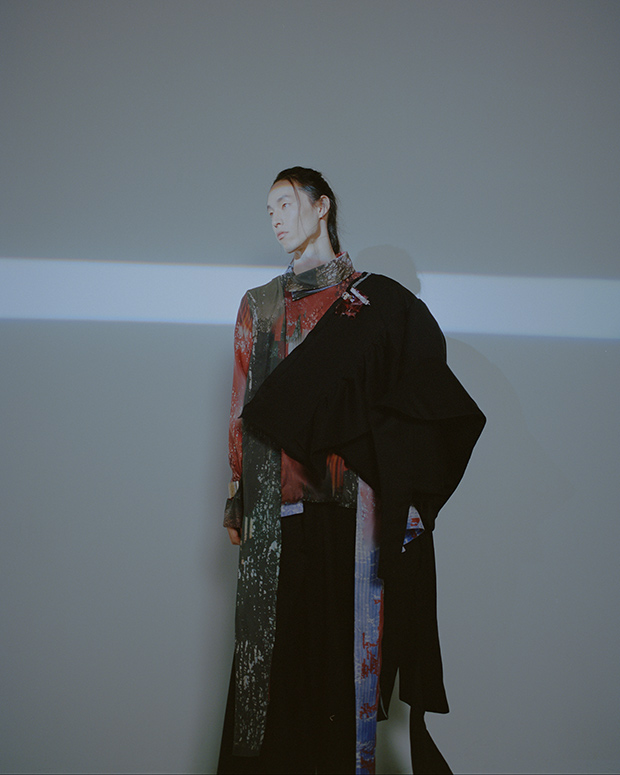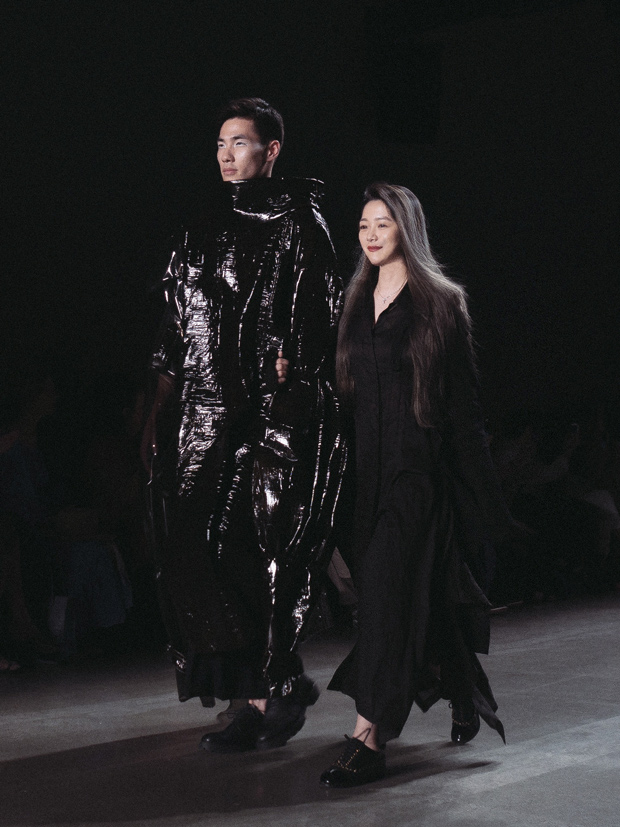JIAYUE GE is a young talented fashion designer with a deep interest in Neuroscience – more specifically, Alzheimer’s disease and Amyotrophic Lateral Sclerosis (ALS). She graduated from Pratt Institute in 2018, and during her undergraduate studies, she took an internship at YARA FLINN’s studio – NOMIA NYC – where she worked as a design assistant. Through the internship, she learned how to grow an independent fashion brand through branding and having distinctive artistic concepts. Afterwards, she joined German designer MELITTA BAUMEISTER’s studio in NYC where she learned to use innovative materials to express her unique artistic concepts.
It is interesting to see how Jiayue managed to incorporate her interest in Alzheimer’s disease and ALS into her first collection, especially because of the intangible nature of those illnesses. Her deconstructed avant-garde garments would not look out of place in fashion events, award shows, and concerts/stage performances; and the well-thought-out concepts behind the designs will always be fascinating conversation starter.
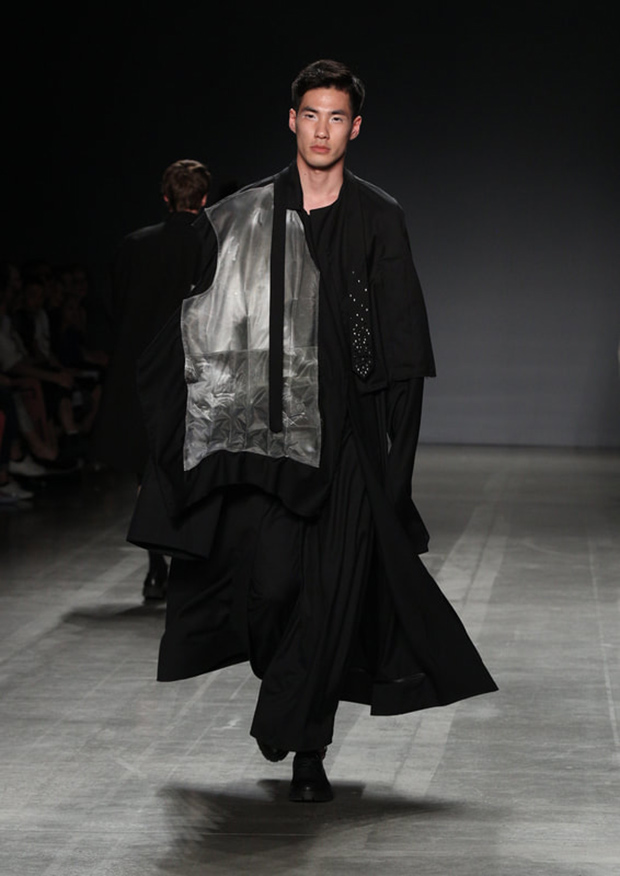
Where did this deep interest in neurodegenerative diseases come from?
Human being’s brain has always been a topic that we need to explore. During my junior year, I started to think about the relationships between memories, illusions and dreams, which brought me into the neuroscience world. Since then, every collection I did was inspired by neuroscience.
Will you tell us more about the concept behind your latest collection?
My latest collection is also the debut collection of my new brand. I took the concept from my thesis collection which is based on the study of Alzheimer’s and ALS diseases. My concept represents the feeling of the patients who were diagnosed with incurable neurodegenerative diseases through their last period of their life. By creating these garments. I would like to express the feeling of disconnection from the societies, the disappearance of their normal lives, and the contrast between the lives before and after their diagnosis. At the same time, the ideas behind this concept represent the fact that people have their own struggles and cannot avoid these struggles. We have no choice but try to embrace these struggles and live through them. Decisions of life are not only for us to make, but it’s only us who can alter it.

How did you incorporate your interest in neurodegenerative diseases in your collection?
At first, it was really a struggle for me to bring the concept into my collection. I started by reading research papers about the diseases. I did some experiments about mimicking how those patients move and live and think about the relationships between those movements and garments. Meanwhile, I researched about artists who suffered from neurodegenerative diseases. Form their work I was inspired and I did some blind drawings of the garments and got shapes from that. I also did a few prints for my collection based on the degenera0ve neuron to have a more specific image of the concept.
Will your future collections also delve into the topic(s) of neurodegenerative diseases?
The whole idea of creating this brand is to spread my power and understandings of neuroscience. Every single collection will be inspired and based on different neuroscience concepts. In the future, I hope my brand can collaborate with experts in the neuroscience field so that the public will get to know about neuroscience more, not only to get to know about the diseases we cannot defeat now but also to encourage more people to contribute to this study field.
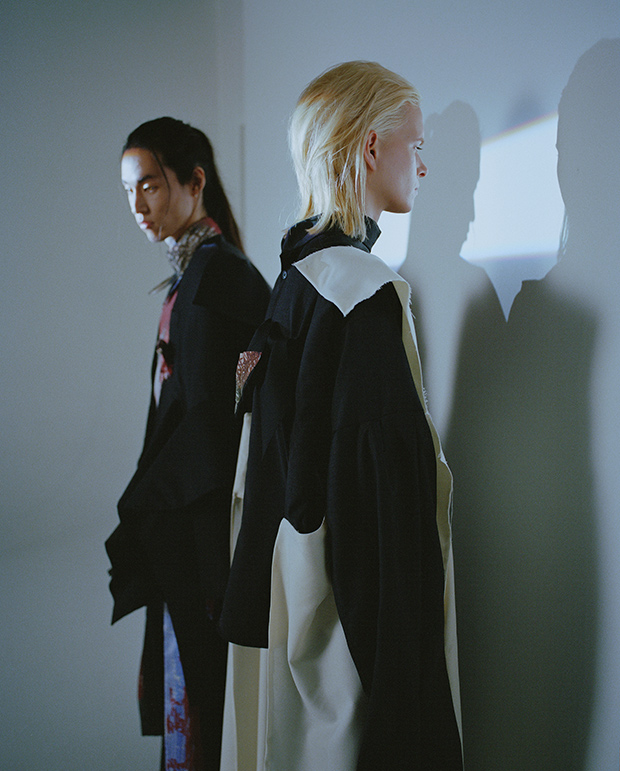
Why menswear? (Or, are these pieces of clothing gender-free?)
Nowadays, people don’t limit themselves with wearing only women’s or men’s clothing. From the pattern-making perspective, my collections are menswear. I found the limitation while designing men’s clothing very interesting. This limitation helps me to have more creative ideas and step out of the box to think about the silhouettes.
Who are your target customers?
My target customers can be from age 18 to even 60. I don’t want to limit my customers to a certain group of people. I believe in people looking for their most comfortable styles of their own. I want my customers to create stories with my garments.
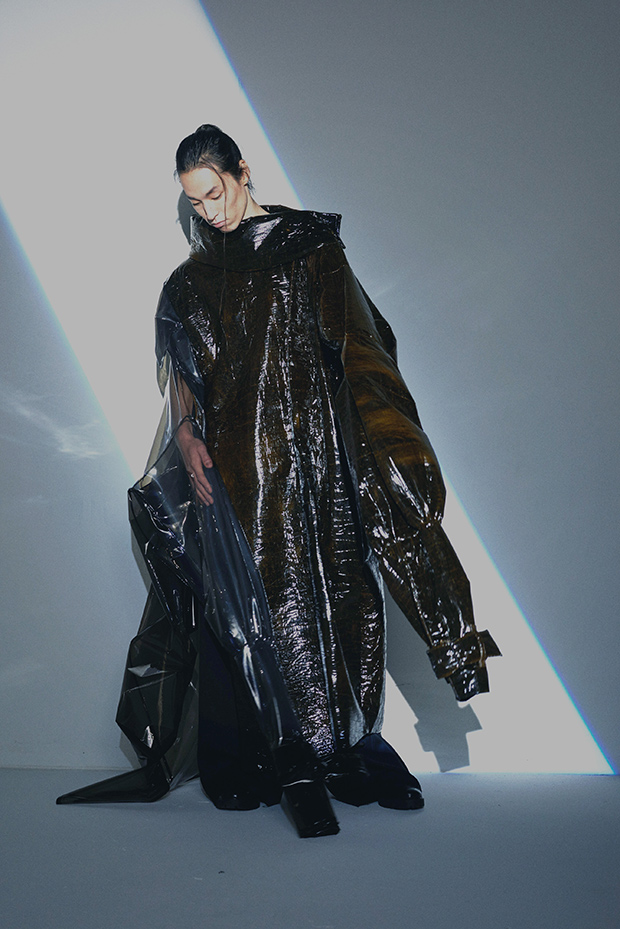
Are your clothes available for purchase at this time? If so, where can we find them? If not, what are your plans in making them available to your target customers?
I am about to launch my debut collection virtually. They will be online along with my accessories line. Customers will find them on the official website for sure. I will also work on getting into the buyer stores and all kinds of online shopping websites.
What can we expect from your brand this year and in the next 3 years?
This year will be a fresh start. I would like to bring my ideas in front of people and in the next 3 years, I will work on helping to bring neuroscience topics into fashion. Hopefully, human beings will have a better understanding of ourselves by more people paying attention to our brains and learn about it.
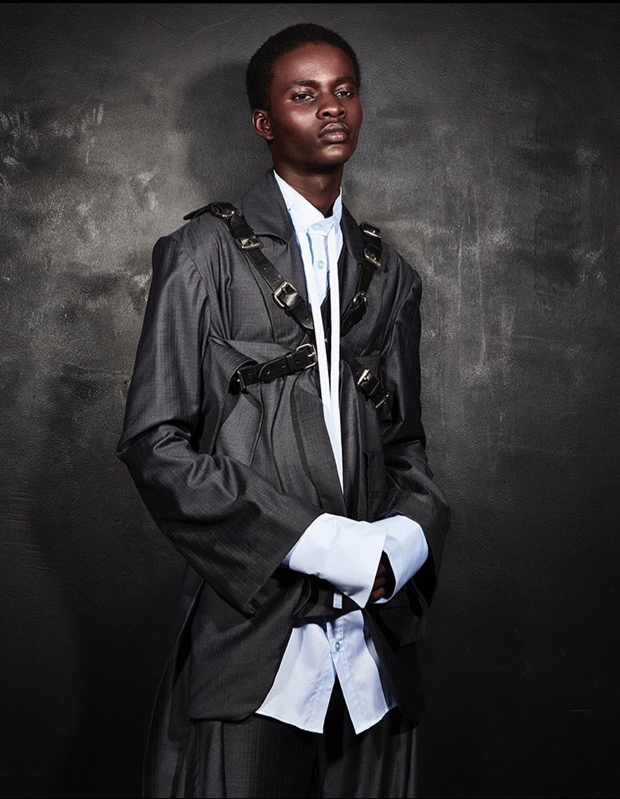
How do you describe your brand/designs?
Since I found my value more clearly, I had a strong connection with the color black. I don’t wear them to be cool but to be the most comfortable for me. I found the fact that every single shade of black looks different very fascinating. Hence, there are lots of black in my collections. My designs are gloomy and aggressive. The outfits are layered and they don’t focus on showing the wearer’s body shape.
What details/design elements/concepts you consider important but some people might fail to notice?
Personally, I think sewing and fabrications are important. I want all my garments to be considered not only clothing but also memories to my customers. Hence, I wish they can last for a long time and accompany my customers throughout their life. Meanwhile, unique and exclusive small ideas on the garments are also important, they represent how much the designer contributes to this brand and communicate with my customers about their ideas.
